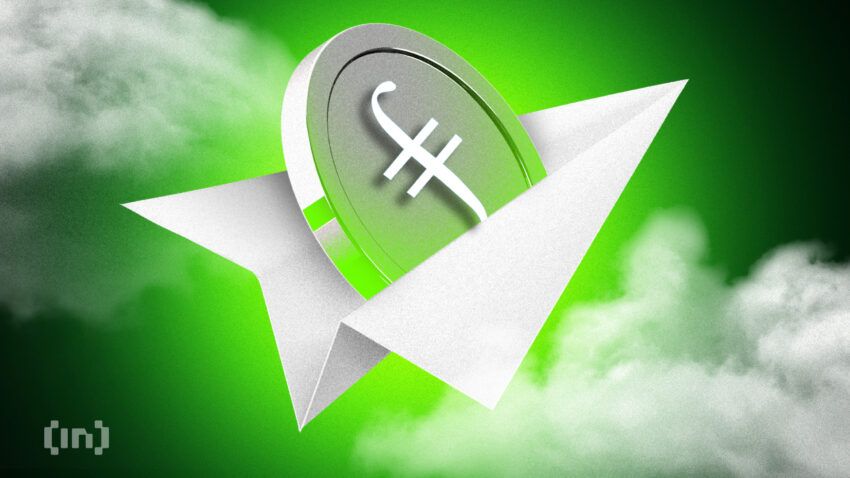Filecoin staking has been gaining a lot of steam of late with the expansion of the Filecoin ecosystem. Despite all the buzz, however, there seems to be widespread confusion among some about how Filecoin works, how it is related to IPFS, and how profitable Filecoin mining and staking really is.
So, we thought our readers could use a detailed guide explaining everything you need to know about the Filecoin ecosystem. Let’s start with the basics.
What is Filecoin?

BeInCrypto has an in-depth guide to InterPlanetary File System (IPFS) protocol. We highlighted how IPFS aims to create a global computer network that guarantees private, secure, and censorship-resistant connectivity. Filecoin is a complementary protocol to IPFS, designed by Protocol Labs, the same team that created IPFS.
Filecoin is an open-source and decentralized storage network that uses the peer-to-peer model to store files. It leverages unused storage spaces of electronic devices such as personal computers. The protocol offers an economic incentive to encourage storage providers to play their role reliably over time.
Anyone can contribute their hard drive’s unused storage space to the Filecoin ecosystem and become a Filecoin miner, which then enables them to earn rewards in the ecosystem’s native asset, filecoin (FIL). Miners can either trade with their filecoins or exchange the asset for other cryptocurrencies or even fiat.
The Filecoin network has two types of miners.
- Storage miners allocate their spare hard drive storage to the network to host third-party data. The reward they earn in return is proportional to the amount of disk space they dedicate to the network (rather than on hashing power).
- Retrieval miners, are responsible for extracting and sharing files with users outside of the Filecoin blockchain.
The Filecoin team says that it will soon implement a third type of miner called Repair provider.
Relationship between IPFS and Filecoin protocols
Both IPFS and Filecoin are complementary protocols with similar objectives of facilitating decentralized storage and sharing of data on the distributed web. Both these systems are open-source and free. They even share many common building blocks, such as network communication protocols (libp2p) and data representation formats (IPLD).
The key difference between the two, however, is that while you do not necessarily have to use Filecoin to interact with IPFS, all Filecoin nodes are IPFS nodes. In other words, while Filecoin is basically powered by IPFS, the former adds an incentive layer on top of IPFS to reward and encourage users to store and share files.
How does Filecoin work?

A good chunk of regular computer users — the majority probably — usually have a sizable volume of empty space in their hard drives. The Filecoin team designed a protocol that would use the available storage in individual computers to host third-party files.
The Filecoin network is powered by IPFS, which provides the underlying distributed system of peer-to-peer nodes. Each node in the network stores just a fraction of all the shared files in the system.
Filecoin miners are responsible for helping the network stay up and running. Anyone requiring decentralized storage on the network pays miners with filecoin to store, retrieve, and distribute data.
Here’s how it works:
Filecoin: Under the hood

Filecoin staking is different from how you would stake any run-of-the-mill PoS coin. In fact, there is no room for yield farming or traditional staking. That’s because of how Filecoin operates under the hood and the consensus mechanism it uses.
Basically, Filecoin is an AirBNB-equivalent of digital storage. Using this protocol, you could “rent” the unused storage in your hard drive to store someone else’s files and earn filecoin (FIL) in return.
Clients place a storage order at a specific price in the storage market. Once a storage miner agrees to provide storage at that specific price while honoring the specific replication factor mentioned in the order, the client transfers the hashed data to the said miner.
The storage miner then places the files on their disk, which the Filecoin blockchain readily records. The miner then provides the client with a private key to their files. Generally, a client’s files are stored by several miners to ensure the optimum level of data security.
Miners also need to deposit in the system that they could lose if they are unable to confirm the data storage for whatsoever reason.
And when the client decides to retrieve the data, they can place a new order in the Retrievable Market. Once they reach an agreement with the receiving miner, the miner will provide them with the data for free.
The consensus mechanism

Most blockchains we are familiar with are based on either of the two most commonly used consensus mechanisms — proof-of-work (PoW) and proof-of-stake (PoS). Filecoin, however, is a deviation from that norm as it utilizes proof-of-replication (PoRep) and proof-of-spacetime (PoSt).
Simply put, PoRep is a consensus mechanism that requires miners to prove that they’re physically storing a unique copy of a client’s data as per the terms of a storage deal. Using PoRep, the storage provider confirms that they have received the data from the client and encoded it in their physical storage in such a way that no other storage provider can replicate that data. This proof is provided at the start of each new deal.
PoS, meanwhile, is used to prove that the miner continues to dedicate their storage to host that same data over time as specified in the deal.
Filecoin features

The Filecoin network touts the following as some of its key features:
- Vast storage space: Filecoin is fully decentralized and affordable. As of today, the network claims to have a network storage power of 18.252 EiB (exabyte or 2^60 bytes) and counting.
- Data security and durability: The consensus mechanism deployed by Filecoin, alongside its relatively high mining rewards, ensures that user data stays up and reachable over time. As for security, you can find all the details in the publicly available Filecoin security audit reports.
- Censorship resistant: Because decentralization and transparency are at the core of Filecoin’s underlying structure, the network is immune to any censorship attempt. It is virtually impossible to coerce the network to delete files or withhold services.
- Open-source code: The network facilitates collaboration between storage providers and clients via its open-source code. This means storage sellers do not have to deploy any kind of infrastructure at their end.
- NFT storage: As a platform that aspires to become the default digital storage option in the web3 era, Filecoin is capable of hosting NFTs.
Filecoin staking: How to get started
As previously stated, filecoin doesn’t support yield farming or traditional staking. So if you are really interested in filecoin staking, you have to use a third-party DeFi platform that allows FIL staking with a good APY.
5 best platforms for filecoin staking
1. Gemini: Gemini, the regulated exchange owned by the Winklevoss brothers, offers around 7.04% on FIL staking. Duration is flexible.
2. Binance: Binance was offering APYs of 7.09% over 30 days, 8.49% over 60 days, and 17.25% over 90 days. However, the exchange seems to have temporarily suspended FIL staking.
3. Filet: As of this writing, Filet is offering attractive APYs on FIL staking — 23% over 180 days and 30% over 360 days.
4. AAX: Short for Atom Asset Exchange, AAX is currently offering 4% APY over a period of 30 days.
5. YouHodler: Switzerland-based YouHodler is offering around 3.04% on filecoin staking. Duration is flexible.
You might want to periodically check StakingCrypto.info to find the best filecoin staking APYs on different platforms
Keep an eye out on FIL performance over time
So far, the Filecoin network has recorded some serious growth both in terms of number of users and use cases. Subsequently, the network’s native asset, FIL, has also been witnessing a growth in market cap and trading volume.
While the brunt of the ongoing bear market has somewhat slowed things down for FIL, we will periodically revisit the project to bring you important updates and, of course, the best filecoin staking opportunities.
Frequently asked questions
Is filecoin mining profitable?
Does Filecoin have a future?
Can I stake filecoin?
Is Filecoin an ERC-20 token?
How do Filecoin miners make money?
Why become a Filecoin storage provider?
How can I get started with Filecoin staking?
What are the key features of the Filecoin network?
How does Filecoin staking work?
What is special about Filecoin?
Disclaimer
In line with the Trust Project guidelines, the educational content on this website is offered in good faith and for general information purposes only. BeInCrypto prioritizes providing high-quality information, taking the time to research and create informative content for readers. While partners may reward the company with commissions for placements in articles, these commissions do not influence the unbiased, honest, and helpful content creation process. Any action taken by the reader based on this information is strictly at their own risk. Please note that our Terms and Conditions, Privacy Policy, and Disclaimers have been updated.



